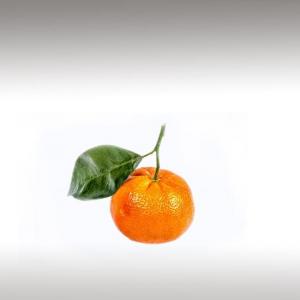
TANGERINE ESSENTIAL OIL (CITRUS RETICULATA) - ESSENTIAL OILS

BASE / GENERAL DATA
Information submited: June 8, 2015 Modified: March 22, 2018 By: OperaDreamhouse
Botanical Name: Citrus reticulata
Common Method of Extraction: Cold expression
Part Typically Used: Fruit fresh peel
Color: Yellow orange
Consistency: Thin
Perfumery Note: Top
Strength of Initial Aroma: Fresh, sweet, orange - like
Tangerine essential oil has the typical citrus scent - fresh, radiant, and tangy sweet. With only subtle differences, it smells a lot like the Mandarin, with some even considering them identical. In comparison to Sweet Orange, Tangerine can be seen as lighter with more candy like tones.
The Tangerine is a variety of the Mandarin Orange. You may sometimes see it on the market as Citrus x Tangerine. The oils have similar properties, but different aroma characteristics.
However, there is a slight difference. Mandarins are more yellow in color and come with pips, while Tangerines are more orange in color and come without pips. So, Mandarin essential oil is also called Tangerine essential oil. The botanical name of both of these plants is Citrus Reticulata, which shows that they are same.
As the name suggests, Mandarin plants are native to China. From there, they went to Europe and now Italy is one of the biggest producers of Mandarin oil.
The Mandarin Orange (Citrus Reticulata), also known as the Mandarin or Mandarine, is a small citrus tree with fruit resembling other oranges. Specifically reddish - orange Mandarin cultivars can be marketed as Tangerines, but this is not a botanical classification.
The tree is more drought - tolerant than the fruit. The Mandarin is tender and is damaged easily by cold. It can be grown in tropical and subtropical areas.
Mandarins are one of the four core ancestral Citrus taxa, and are thought to have evolved in Vietnam, southern China, and Japan.
Mandarins have a special place in Chinese culture as they were given as gifts to the Mandarins (the name given to Chinese officials under the king).
Mostly used in thefragrance industry. Tangerine oil doescontain limonene, which may suggest its use in household cleaners.
Chemical structure:
TheTangerine essential oil is extracted by cold compression of the fresh peels of these fruits and containsalpha thujone, alpha pinene, beta pinene, camphene, citral, citronellal, gamma terpinolene, geranial,geraniol, limonene, linalool, methyl methylanthranilate,myrcene, nerol, sabinene and terpineol.
Common Method of Extraction: Cold expression
Part Typically Used: Fruit fresh peel
Color: Yellow orange
Consistency: Thin
Perfumery Note: Top
Strength of Initial Aroma: Fresh, sweet, orange - like
Tangerine essential oil has the typical citrus scent - fresh, radiant, and tangy sweet. With only subtle differences, it smells a lot like the Mandarin, with some even considering them identical. In comparison to Sweet Orange, Tangerine can be seen as lighter with more candy like tones.
The Tangerine is a variety of the Mandarin Orange. You may sometimes see it on the market as Citrus x Tangerine. The oils have similar properties, but different aroma characteristics.
However, there is a slight difference. Mandarins are more yellow in color and come with pips, while Tangerines are more orange in color and come without pips. So, Mandarin essential oil is also called Tangerine essential oil. The botanical name of both of these plants is Citrus Reticulata, which shows that they are same.
As the name suggests, Mandarin plants are native to China. From there, they went to Europe and now Italy is one of the biggest producers of Mandarin oil.
The Mandarin Orange (Citrus Reticulata), also known as the Mandarin or Mandarine, is a small citrus tree with fruit resembling other oranges. Specifically reddish - orange Mandarin cultivars can be marketed as Tangerines, but this is not a botanical classification.
The tree is more drought - tolerant than the fruit. The Mandarin is tender and is damaged easily by cold. It can be grown in tropical and subtropical areas.
Mandarins are one of the four core ancestral Citrus taxa, and are thought to have evolved in Vietnam, southern China, and Japan.
Mandarins have a special place in Chinese culture as they were given as gifts to the Mandarins (the name given to Chinese officials under the king).
Mostly used in thefragrance industry. Tangerine oil doescontain limonene, which may suggest its use in household cleaners.
Chemical structure:
TheTangerine essential oil is extracted by cold compression of the fresh peels of these fruits and containsalpha thujone, alpha pinene, beta pinene, camphene, citral, citronellal, gamma terpinolene, geranial,geraniol, limonene, linalool, methyl methylanthranilate,myrcene, nerol, sabinene and terpineol.

SPIRITUAL PRACTISES DATA

MEDICINE / HEALTH DATA

BEAUTY / COSMETICS DATA

FOOD / COOKING DATA
COMMENTS
No comments.


